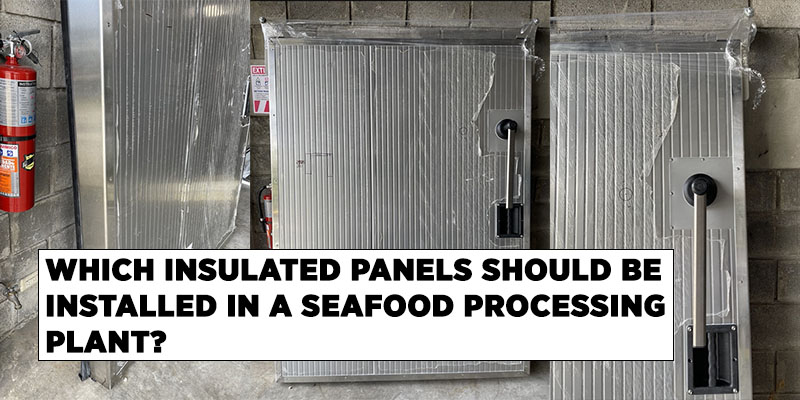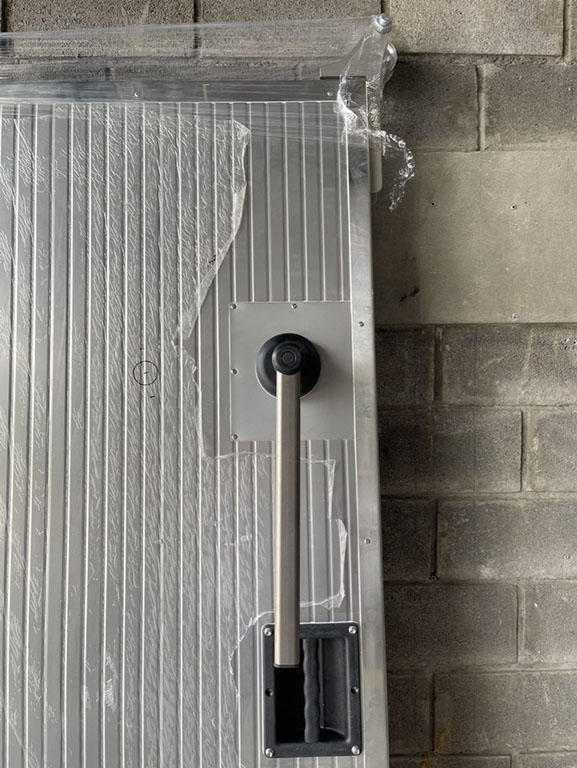WHICH COATING HELPS TO PREVENT SALT CORROSION OF SHELLFISH?
This publication provides a brief overview of the use of stainless steel cold room panels and stainless steel cold room doors in the fishing industry.
WHY PREVENT CORROSION IN A COLD ROOM ENVIRONMENT?
The main problem we must face when building a cold or processing room in an aggressive environment is corrosion. The corrosion derives from the salt of the shellfish, which quickly oxidizes any galvanized steel. Nor will most prepainted steel withstand the aggressive environment. Some specific coatings can withstand the level of corrosion found in a seafood processing room, but they are not readily available on the market. The most effective coating is stainless steel, the main facing of stainless steel panels.
AISI 304 stainless steel has a proven track record of being the most effective and easiest to achieve. It is a good choice for any application where high corrosion resistance is required, especially in high humidity areas.
Stainless steel is the most popular material used for stainless steel cold room panels and stainless steel cold room doors due to its high quality and durability.
Grades 304 and 316 are austenitic stainless steels due to their metallurgical structure (austenite). Consequently, it gives them excellent flexibility, strength, non-magnetic properties, weldability, and corrosion resistance.
WHAT FACTORS AFFECT STAINLESS STEEL CORROSION RESISTANCE?
The corrosion resistance of stainless steel depends on forming a “passive” chromium oxide film on the metal surface that is highly resistant to corrosion. In grades 304 and 316, we add approximately 18% chromium to create this film, and in 316, we add 2% molybdenum to improve corrosion resistance further. Grade 304 is generally only suitable for fixtures washed down frequently with fresh water. The 316 grade is ideal for constructing critical rigging components where salt can concentrate and remain in cracks due to evaporation. In other words, conditions can cause pitting in the stainless still of 304 grade.
We typically use stainless steel, grade 304, in insulated panels. Why so? Because there is rarely direct contact between shellfish and the wall panels in the fishing industry. Furthermore, we wash the walls of the seafood processing room with fresh water daily.
SEAFOOD PROCESSING PLANT PROJECT IN NICARAGUA: STAINLESS STEEL COLD ROOM PANELS. STAINLESS STEEL COLD ROOM DOORS.
Our most recent seafood processing plant project that we have delivered to Nicaragua. We sent 150mm cold room panels with both sides in 304 stainless steel to Nicaragua. Furthermore, we have also provided stainless steel doors, made with stainless steel rails and pulleys, that last over time.
CONCLUSION
Corrosion is the most serious issue when constructing a cold room in an aggressive environment. The corrosion comes from the salt of the shellfish, which quickly oxidizes any type of galvanized steel. There are coatings that can withstand the level of corrosion in a seafood processing room. The corrosion resistance of stainless steel depends on the formation of a “passive” chromium oxide film on the metal surface. To create oxide film, grades 304 and 316 contain approximately 18% chromium. AISI 304 stainless steel is an excellent choice for any application requiring high corrosion resistance, particularly in high humidity areas.
THE BENEFITS OF STAINLESS STEEL:
- Material that resists corrosion
- Excellent forming properties
- It has a clean aesthetic appearance and requires little maintenance
- Durability
- Simple to clean and disinfect
PLEASE CONTACT US RIGHT NOW
Call us at +44 7887 884768 for more information on stainless steel cold room panels or stainless steel cold room doors. You can also contact us by emailing sales@globepanels.com or by filling out the form below. After you contact us, we may provide you with an estimate and further discuss our products and services.
Adriano, Alberto. “When to Use Stainless Steel Insulated Panels? Advantages of INOX.” When to use stainless steel insulated panels? Advantages of INOX. globepanels.com, March 14, 2019.
Adriano, Alberto. “Stainless Steel Insulated Panels Improve the ISO of a Cleanroom.” How to Increase the Level of ISO of a Cleanroom INOX Insulated Panels, globepanels.com, 4 Apr. 2019.







 WhatsApp Us
WhatsApp Us
0 Comments Leave a comment